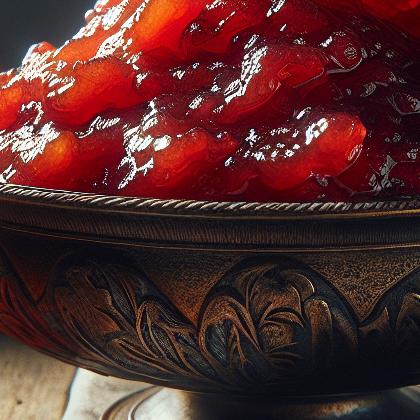Quince Paste

Quince, Cydonia oblonga, is the sole member of the genus Cydonia in the family Rosaceae (which also contains apples and pears, among other fruits).The quince /ˈkwɪns/, is a small deciduous tree that bears a pome fruit, similar in appearance to a pear, and bright golden-yellow when mature. Throughout history the cooked fruit has been used as food, but the tree is also grown for its attractive pale pink blossom and other ornamental qualities.The tree grows 5 to 8 metres (16 and a half feet to 26 feet) high and 4 to 6 metres (13 feet to 19 and a half feet) wide. The fruit is 7 to 12 centimetres (3 to 5 inches) long and 6 to 9 centimetres (2 to 3 and a half inches) across.It is native to rocky slopes and woodland margins in South-west Asia, Turkey and Iran although it can be grown successfully at latitudes as far north as Scotland. It should not be confused with its relative, the Flowering Quince, (Chaenomeles).The immature fruit is green with dense grey-white pubescence, most of which rubs off before maturity in late autumn when the fruit changes colour to yellow with hard, strongly perfumed flesh. The leaves are alternately arranged, simple, 6–11 cm (2–4 in) long, with an entire margin and densely pubescent with fine white hairs. The flowers, produced in spring after the leaves, are white or pink, 5 cm (2 in) across, with five petals.Quince is used as a food plant by the larvae of some Lepidoptera species including brown-tail, Bucculatrix bechsteinella, Bucculatrix pomifoliella, Coleophora cerasivorella, Coleophora malivorella, green pug and winter moth.Four other species previously included in the genus Cydonia are now treated in separate genera. These are Pseudocydonia sinensis and the three flowering quinces of eastern Asia in the genus Chaenomeles. Another unrelated fruit, the bael, is sometimes called the "Bengal quince". In the famous children's poem, The Owl and the Pussycat by Edward Lear (1871), "they dined on mince and slices of quince..."
Quince paste Properties:
| Food Property | Type | Description |
|---|---|---|
| Flavor Profile | Sweet | Quince paste has a naturally sweet flavor due to the high sugar content of quince fruit. |
| Texture | Firmness | Quince paste has a firm texture when set, making it easy to slice and serve. |
| Nutritional Value | Fiber | Quince paste is high in fiber, which can help aid in digestion and promote satiety. |
| Color | Natural Pigments | Quince paste has a natural golden color from the quince fruit. |
| Aroma | Volatile Compounds | Quince paste has a fragrant aroma from the cooked quince fruit. |
| Cooking Behavior | Heat Conductivity | Quince paste can be heated to soften and mold into different shapes for presentation. |
| Water Retention | Quince paste has good water retention, allowing it to hold its shape when set. |
Food Pairing App - Version 1.2.0
